Cross-posted from Spacing Montreal — words and pics by Cedric Sam
– – – – – – – – –
For the entire first week of my two-week stay in Beijing last April, my host, an American-Chinese living in Beijing, has been chanting me praises of Nanluogu Xiang (Nanluogu Lane or å—锣鼓巷 in Chinese characters), a narrow alleyway (also called “hutong”) typical of Beijing, at the heart of the city, now lined with trendy shops and Western-style cafés catering to an expat and tourist crowd.
Nanluogu Xiang is located on Beijing’s central axis, described by Spacing Toronto’s Megan Hall in her most recent article from the capital of China. Featured on the Beijing Olympics website, the hutong is among Beijing’s most famous ones and has been under a special status since 2006.
It was only at the end of the second week in Beijing that I actually walked through it for the first time, a little by accident. After a meal of jiaozi (dumplings), the Whitby-born Chinese-Canadian friend that I was with showed me the area where he lived, which turned out to be just beyond this Nanluogu Xiang! A student of Chinese medicine, he started to rent a room two years in a courtyard house nearby, for about the equivalent of 275$ of our Canadian dollars.
When he first moved in the neighbourhood, he recalls that Nanluogu Xiang was nothing like it is today. On the lane that stretches on 1km between Gulou Dajie (Gulou Avenue) and Di’anmen Street, where the Central Academy of Drama‘s (the school of Zhang Ziyi and other Chinese cinema notables) west side is also located, there were just two cafés two years before.
Fast-forward to today and you now find all kinds of businesses, like the Nine-Thirty, a Hong Kong-themed coffee shop with wifi and movie nights, or a teashop ‘n bar with live music shows (see photo below), such as the Sandglass Café, owned by his two twentysomethings friends of Mongolian ethnic origin, or again, a designed t-shirt shop like Plastered that plays on Beijing landmarks (I bought a t-shirt with the image of an old subway ticket).
A different strike of chance came the day after, when I returned to Nanluogu Xiang with my own directions. As I was walking down the alley, t-shirts with a peculiar design hanging at a shop window caught my eye, and I decided to have a closer look at them. After a standard welcome starting with “Ni hao”, the shop owner switches to English to tell me that he was actually born in Montreal!
With his two Overseas Chinese friends, Raymond Walintukan (read my interview with them on Comme les Chinois) runs NLGX (the acronym of Nanluogu Xiang), a design and lifestyle shop/cafe. Speaking from their rooftop patio overlooking the hutong, he explains that the whole area is rebuilt and protected by the municipal government and is not going to change for decades to come.
Among the trendy shops, people are still living in the one to two-story high traditional houses. On my third visit to the lane, I shamelessly snapped the picture of a man cooking dinner. He had, after all, his door open at lane-level!
Signs forbidding automobile circulation could be seen at one end of Nanluogu Xiang, but traffic signs, like the one above on an intersecting hutong, don’t seem to carry much weight in Beijing…
Une version franà§aise de cet article a été publiée sur Comme les Chinois.

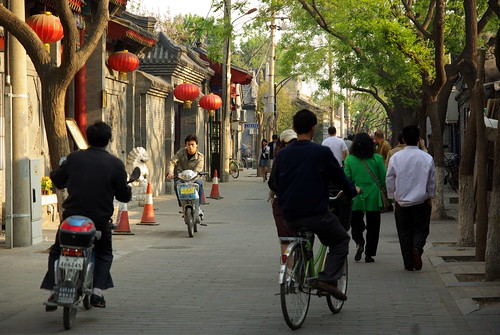
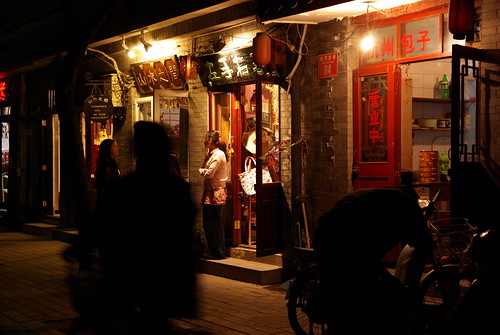
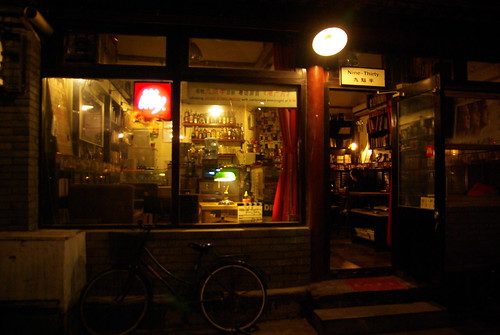
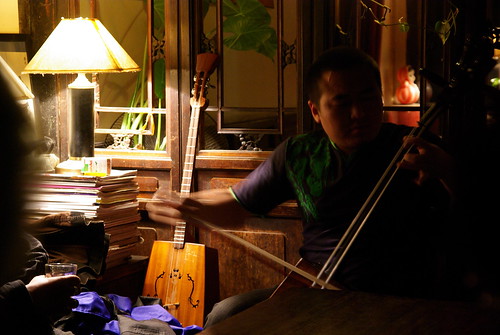
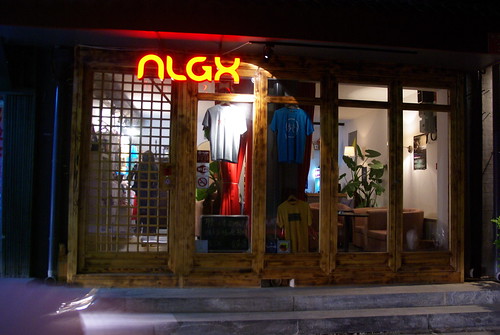

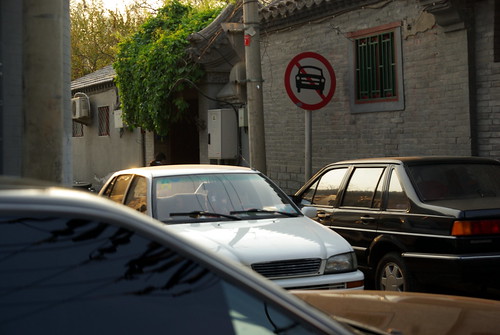
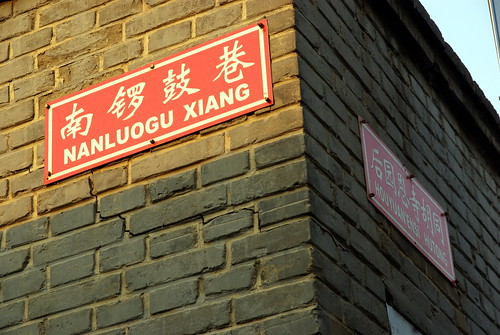

3 comments
“the whole area is rebuilt and protected by the municipal government and is not going to change for decades to come.”
It makes me wonder what the area was like before it was rebuilt, and what exactly the government is hoping to preserve, since historical preservation isn’t the objective.
It kind of reminds me of a story I heard about a synagogue in Harbin, China (near the Russian border) which was “restored.” The storyteller was a Chinese government engineer who had worked on the restoration, and he said that it was done by the government without any regard for or interest in historical or cultural accuracy (or sensitivity), and included painting the roof of the very plain synagogue gold, the interior red, and hanging a painting of The Last Supper inside.
You write great article on Asian culture. My question is, you are clearly not Asian and speak like you come from afar, are you a student or professor? Keep up the interesting work. I like many writing you have done but be wise and respect culture that is new to you. Some photos should not be taken, make sure to ask! Have fun and I like America too. 🙂
Thank you for the information! We are always looking for new and interesting places to take our travelers. We will check the area out.